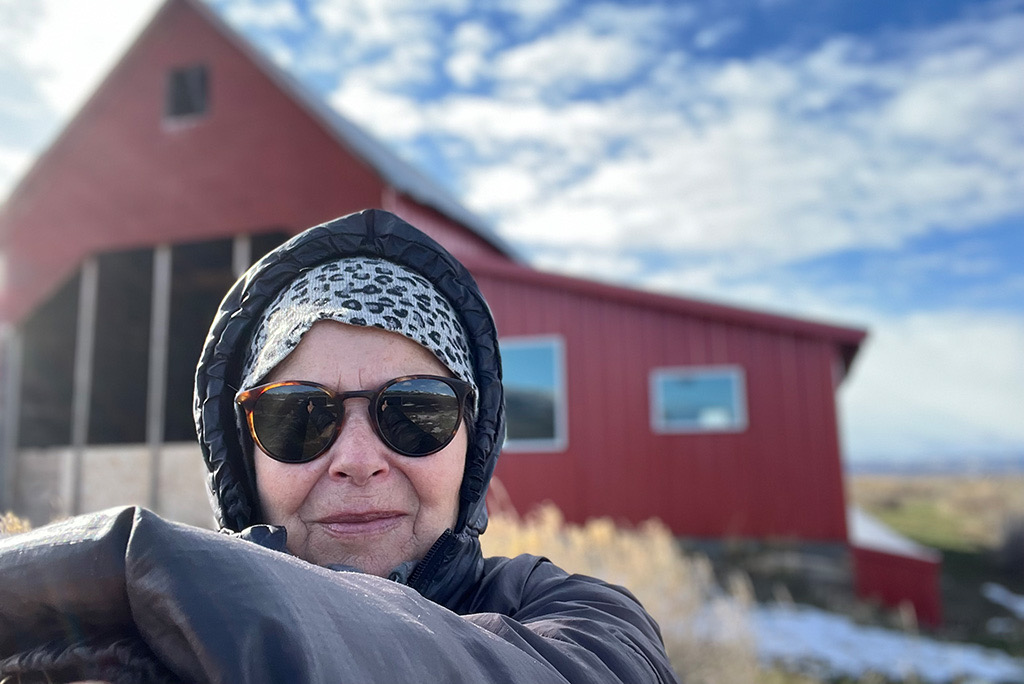Where do dreams, ideas and stories come from? Most of us are so immersed in our physical lives that ew forget to ponder our multi-dimensional potential. For example, where do we go when we daydream? Where do we exist while drawing, designing or creating? As we rush about the main lobby floor of the physical world, we forget that we exist in multiple realms. So, what if we were to consciously travel up the elevator shaft of our imagination? There are so many floors available to us that hold unique perspectives and possibilities.
Artist, writers, musicians and creatives have long undulated between these realms to bring forth their stories, music, art and beauty. One of these extraordinary writers who expresses herself in the physical and creative realms is renowned American novelist, critic and essayist, Judith Freeman, author of eight books including Family Attractions, The Chinchilla Farm, A Desert of Pure Feeling, Red Water, Set for Life, and the nonfiction book, The Long Embrace: Raymond Chandler and The Woman He Loved, as well as a memoir, The Latter Days. Her most recent novel, MacArthur Park, was released in October 2021. Freeman will be speaking at this year’s Sun Valley Writers’ Conference.
Freeman’s literary career spans 20 years of learning and 30 years of writing. A fifth generation Westerner raised in Ogden, Utah, Freeman surprisingly did not grow up in a household of readers. It wasn’t until high school that she discovered the joy of literature in the novels of Thomas Hardy and Willa Cather, among others. “That was a tremendously exciting moment,” she says, “because I knew then that I wanted to tell stories, and I knew I would gravitate towards fiction because that’s what captured me.”
From that point forward, Freeman spent 20 years teaching herself to write before publishing her first book in 1988. She would read, study and dissect books so that she could better understand how the author had accomplished something she admired. She says, “I studied how authors moved characters through scenes, how they transitioned from one scene to the next, and how they created tension and dialogue.” This process informs her work to this day, and she believes that any aspiring writer should read, study and emulate the books they love in order to hone their skill. Many authors remain important to Freeman, including Cormac McCarthy for his Border Trilogy books and Alice Munro for her mastery of the short story and plumbing the depths of human experience.
Freeman’s own ability to dive deep into human existence and to observe life’s subtleties allow her to explore age-old literary themes, including friendship, identity, courage and perseverance in a refreshing and profound way. While each of her eight books stands alone, each story highlights “the ordinary, bumble and flawed human being and how we are all trying to make our experiences turn out right,” says Freeman. “In my most recent book, MacArthur Park, I did some of my deepest diggings into the subject of friendship and marriage, the deepest relationships we have outside of our birth families. The story is about conflict and compromise and what we do to sustain love.” As readers, these familiar themes never get old because each author’s lens provides insight, depth and wisdom that sustain us. “Even as authors explore the same topics again and again, they differ each time because who we are influences every idea; it’s wonderful because it’s inexhaustible,” says Freeman. “This gift of bringing such complex and perennial ideas into the physical world is the magic of writing.”
Just as Freeman is at home between the worlds of ideas and writing, she is also at home in two distinct landscapes: the Camas Prairie, Idaho, and Los Angeles, California. Freeman first moved to Idaho in 1970 as she was trying to become a writer. Living in Ketchum with her young son, she taught skiing during the day and wrote at night. After a few years of enjoying the beautiful outdoors, horseback riding and wrangling, she moved to Los Angeles to be with other young writers, hoping some day to return to the country.
This dream became a reality when, years later, she and her husband, artist and photographer Anthony Hernandez, purchased a 15-acre farm on the Camas Prairie an hour from Sun Valley. She says, “I feel deeply connected to the natural and urban landscape. I love our community in Los Angeles, and I love the counterpoint of the prairie, where the antelope are moving around and the Sandhills are flying over. I really want both worlds, and I write about both worlds.”
Ultimately, Freeman reminds us of what’s possible when we remember our multi-dimensional potential. As a writer, she inhabits so many worlds — “real life,” stories, imagination, and ideas — and seamlessly moves between them. When she is immersed in wiring a book, she’s all in, “entering that world, enlarging it, and moving it forward. It’s not something I have to force myself to do,” she says. “Each day, I go into that world, pick up with the flow and get carried along.” When Freeman is between books, she is always ready for the next idea and inspiration to drop. She laughs, “I never lack ideas. I have so many circling, like planes overhead. I just lack the time to write all the books!”
So, where do stories come from, according to Freeman? “We’re magpies!” she says. “Someone tells us a story, we read something, or we remember something. It’s an amalgam of memory, imagination and a spark of some incident, event or person. It’s a mystery and a gift from a place, like a dream.”


